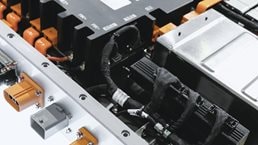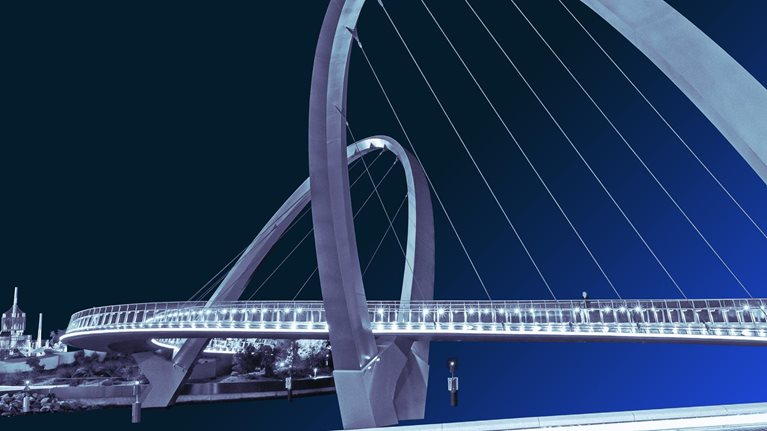In 2021, the Biden administration issued two executive orders intended to encourage more widespread adoption of battery electric vehicles (BEVs) in the United States and thereby move the country closer to achieving its net-zero emissions goal.1 The first executive order aims to revitalize the flagging electric-vehicle (EV) program of the US government, requiring the replacement of the government’s entire fleet of about 650,000 vehicles with US-made electric models. The second executive order set a target for EVs to make up half of all new vehicles sold in the United States in 2030.
Only 3,170 vehicles, or less than 1 percent, of the US government’s total fleet are EVs. According to McKinsey research, several challenges will likely need to be addressed, including a lack of targeted charging infrastructure, vehicle financing, and the impact of EVs on fleet operations and change management. But there are signs that things may be changing. According to McKinsey consumer research, for example, high total cost of ownership has been a barrier to adoption, but the industry has reached a point where up-front investments in technology and infrastructure could be paid back through lower maintenance and fuel costs.
But questions remain: What vehicles should transition, and when? How will public stakeholders operate, charge, and maintain e-fleets? How will the government and other stakeholders manage the transition successfully? This article addresses those questions and provides options to consider when taking on strategic challenges, such as fleet segmentation, road map development, and execution and change management. This framework could help inform the US government’s efforts to transition its fleet to zero-emissions vehicles.
The EV landscape
Despite the COVID-19 pandemic, electrification has accelerated at a breakneck pace. In 2021, EVs posted their highest-ever proportion of market share in vehicle sales, both globally (6.2 percent) and in the United States (3.5 percent).2 In addition, major OEMs operating in the United States made commitments toward the 2030 target of EV sales, creating tailwinds for accelerated EV adoption (Exhibit 1). According to IHS Markit, more than 65 new, fully electric vehicle models are expected to hit the US market by 2025, with a strong focus on medium and large vehicles.

Increased customer awareness and familiarity with EVs, particularly in densely populated metropolitan areas, is also helping accelerate demand and adoption, especially in the Southern and Western United States. The Bipartisan Infrastructure Bill passed by Congress in 2021 dedicates $7.5 billion to stimulate infrastructure development for EV charging stations and another $7.5 billion to accelerate the electrification of buses and ferries.3 Facilitating greater consumer adoption of EVs will likely require investments in public charging stations.
Transitioning US government fleets to EVs could also reduce CO2 emissions and make an economic impact on the overall cost basis for government agencies. Currently, low estimates from the US General Services Administration’s Fiscal year 2020 federal fleet report suggest that the US government fleet costs approximately $700 million in fuel costs and $1.3 billion in maintenance costs.4 However, McKinsey analysis suggests that an accelerated adoption scenario5 could mean a 7 percent reduction in the cost per mile to operate vehicles and a 19 percent reduction in CO2 emissions (Exhibit 2).

Considerations for fleet electrification
The US government may want to consider three phases—fleet segmentation, road map development, and execution and change management—that could help public stakeholders support plans to electrify its fleet.6 These phases may also provide guidance for broader EV rollout across the United States.
Phase one: Fleet segmentation
As a first step, stakeholders need an accurate understanding of the feasibility of electrifying different vehicle applications, given current inventory and infrastructure capabilities.
Assess the current fleet profile and the evolution of charging infrastructure. Administrators and fleet managers could establish a baseline of current infrastructure, capabilities, and vehicle inventory to understand the electrification potential of different fleets and determine use cases for an electrification strategy now and in the future (Exhibit 3).

For example, an electrification strategy could include considerations such as vehicle type, charging availability and distance traveled, and mission and usage (emergency, stealth, general movement of people, or goods transport). This information may help agencies electrify vehicles in the optimal sequence: starting with regular civilian use in cities and progressing to heavy-duty vehicles that travel long distances (Exhibit 4). Vehicles such as sedans, passenger vans, and SUVs, for instance, represent about 35 percent of the US government’s fleet7 and could be targeted for electrification first. Vehicles used in service contexts would then be electrified before those in purpose-specific contexts, such as law enforcement. Finally, vehicles that have lower daily mileage and operate in areas with a high density of public charging stations could be electrified before those operating in areas with fewer charging stations or that have higher daily mileage.

This segmentation approach may also help government agencies understand which vehicle-electrification technologies meet specific fleet requirements, such as the operating cycles of US Postal Service vehicles. Cross-industry stakeholder collaboration and ongoing dialogues could also ensure the right vehicles are available at the right time.
In addition to fleet segmentation, the US government could also develop new capabilities in EV procurement, maintenance and service, and charging installations, as well as battery-specific expertise (such as maintenance, battery management, and battery data). These capabilities could help the government integrate its fleet with the existing EV fleet ecosystem and promote an understanding of electrification’s impact within its operations.
Identify potential technology and infrastructure enablers. As EV adoption accelerates, there will likely be an increased demand for the delivery of significant amounts of electricity to public and private chargers via the grid. California currently has the largest number of publicly accessible EV charging stations, and other states, such as New York and Florida, are following suit.8 The total number of public charging stations in the United States already increased from 13,500 in 2017 to almost 47,000 by the end of 2021, a nearly 40 percent compound annual growth rate (Exhibit 5).

The inclusion of charging-infrastructure investments in the bill passed by Congress could lead to a significant increase in the number of public charging stations across the United States. Nonetheless, to ensure smooth fleet operation, the US government will likely need to support on-demand charging at both depots and public charging stations. Where the government locates its chargers, and whether they are available to consumers, could have potential implications for the EV market in general. However, the US government could meet future demand for charging stations by designing chargers to serve private EVs on separate traffic lanes and situating them in high-traffic areas.
Would you like to learn more about our Public & Social Sector Practice?
Infrastructure developments—coupled with improved battery chemistry that enables faster charging and expanded range—could also accelerate EV adoption. Other technological ways to increase adoption may include integrating new-vehicle data and supporting modes of operation (such as taking the vehicle home versus parking at a depot) with existing telematics and fleet management solutions. Fleet administrators would likely need to ensure that selections relating to the telematics of the zero-emissions vehicle fleet can easily integrate with the existing software suite and stack, such as payroll and costing systems.
Phase two: Road map development
Once the US government understands its current fleet profile and the tools that are required to roll out an electrification strategy, it could develop a road map for implementation.
Create an achievable plan. Government agencies could begin by examining the insights from fleet segmentation and then incorporate elements such as new-vehicle procurement strategies and options for disposing of existing vehicles. Agencies and other shareholders could also make plans to ramp up electrification infrastructure in coordination with the proposed infrastructure bill. Concurrently, agencies could analyze legacy facilities to understand where to deploy charging stations. They could also develop new capabilities and processes (such as updated route planning) to optimize the operating model as the fleet transitions toward EVs.
Secure funding. A detailed budget is required to illustrate how funding requests will support the road map to a fully electrified fleet. This road map could highlight the potential impact of these investments on carbon neutrality, lower total cost of ownership, and better mission value. Managers may want to consider including any findings in funding requests.
The road map could be continuously refined based on evolving technologies, vehicle types, and infrastructure deployment. The US government could prepare to accelerate or slow plans as needed to ensure proper execution against the mission profile.
Phase three: Plan execution and change management
Consistent communication with industry stakeholders and internal stakeholders, such as employees, will likely help the US government achieve its goals. The government could launch a comprehensive learning curriculum to ensure government employees are well trained and confident in this new electric environment. For instance, training could cover the impact of an EV transition at the day-to-day operational level, such as charging “dos and don’ts” and battery management during winter. Employees might also learn the differences in maintaining and operating EV technologies compared with internal-combustion-engine (ICE) vehicles and get guidance on the unique charging needs of government fleets and vehicle types, among other considerations.

Capturing the battery value-chain opportunity
Agency leaders could also address operational questions, such as whether employees get reimbursed for charging at home or what the policy should be on guaranteed charger or vehicle availability in urgent situations. Additional training topics could include how to deal with emergency scenarios such as vehicle fires or operating high-voltage fast-charging equipment so that staff are trained and prepared for any eventuality.
Once the EV transition is in motion, it could accelerate changes among individual government fleets by providing the necessary charging infrastructure, situating fast-charging stations along key routes, and equipping service units to diagnose, repair, and maintain EV fleets.
The US government has one of the largest and most diverse commercial fleets in North America. As such, it could play a key role in preparing the market for electrification by modeling how to electrify a fleet, potentially accelerating electrification by lowering barriers to EV adoption. The impact of the current administration’s infrastructure bill will likely play a major role in nurturing the broader EV landscape as well.
Making the most of these opportunities will likely depend on commitments from industries, urban centers, and the government itself. However, a robust and well-communicated electrification strategy supported by stakeholder alignment could mean a win–win situation for the government and the EV industry as a whole.

